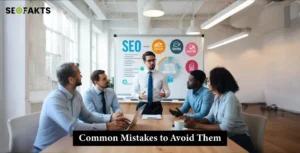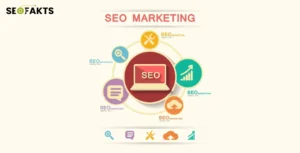Explore the 5 common website mistakes that could be hurting your seo. Learn how issues like poor mobile optimization and duplicate content can impact your search rankings, and digital landscape discover effective solutions to enhance your site’s visibility and user engagement.
Related blog Common SEO Mistakes and How to Avoid Them
1. Neglecting Mobile Optimization
With over half of web traffic coming from mobile devices, mobile optimization is no longer a luxury—it’s a necessity. Google has implemented a mobile-first indexing approach, meaning it primarily uses the mobile version of your site for ranking and indexing. If your website isn’t mobile-friendly, you risk alienating a significant portion of your audience and losing valuable search engine rankings.
Solution
To enhance your website’s SEO, adopt a responsive design and optimize loading times to ensure a seamless experience for mobile users. Regularly test your site on various devices to maintain performance. Additionally, focus on creating concise, keyword-rich URLs, and craft unique title tags and meta descriptions for each page to improve clarity and visibility in search results.
- Adopt Responsive Design: Ensure that your website automatically adjusts to fit various screen sizes. This creates a seamless experience for users, regardless of their device.
- Optimize Loading Times: Mobile users are often on-the-go and expect fast loading speeds. Utilize tools like Google PageSpeed Insights to identify areas for improvement, such as optimizing images and minimizing code.
- Test on Multiple Devices: Regularly check your site on various devices and browsers to ensure consistent performance.
Related blog 10 Essential SEO Tips for Content Writers to Boost Your Website’s Ranking
2. Using Poorly Structured URLs
A URL is often the first impression users and search engines have of your content. Long, 5 common website mistakes complex URLs filled with random characters can confuse visitors and reduce click-through rates. Moreover, search engines favor clean and descriptive URLs as they are easier to crawl and understand.
Solution
To improve your website’s SEO, ensure that your URLs are concise and descriptive. Use a clear structure that includes relevant keywords, making it easy for both users and search engines to understand the page’s content.
- Keep It Simple: Aim for short, meaningful URLs that clearly describe the page content.
- Include Keywords: Incorporate relevant keywords naturally within the URL to enhance search engine visibility. This not only aids SEO but also gives users a clear idea of what to expect.
3. Overlooking Title Tags and Meta Descriptions
Title tags and meta descriptions are fundamental components of on-page SEO. They inform search engines about the content of your pages and serve as a preview for users in search results. Missing or poorly written tags can lead to lower click-through rates and negatively impact your rankings.
Solution
To effectively optimize your title tags and meta descriptions, ensure each page has a unique title that accurately reflects its content and includes relevant keywords, ideally around 60 characters long. Craft compelling meta descriptions, approximately 155 characters, that summarize the page’s content and entice users to click through.
- Craft Unique Title Tags: Each page should have a unique, keyword-rich title tag that is approximately 60 characters long. This helps search engines categorize your content effectively.
- Write Compelling Meta Descriptions: Create engaging meta descriptions (around 155 characters) that summarize the page’s content and entice users to click. Use action-oriented language and include a call to action when appropriate.
- Utilize Structured Data: Implement structured data (schema markup) to enhance your search listings with rich snippets, which can improve visibility and click-through rates.
Related blog Unlocking the Secrets of Effective SEO: What You Need to Know
4. Allowing Duplicate Content
Duplicate content can be a major roadblock for SEO. It can confuse search engines, leading to diluted authority across multiple pages and potentially lower rankings. Whether it’s unintentional duplicates or scraped content from other sites, addressing this issue is crucial.
Solution
To address duplicate content issues, start by conducting regular audits using tools like Copyscape or Siteliner to identify any duplicate pages on your site. Implement canonical tags to indicate the preferred version of a page, consolidating ranking signals and helping search engines understand which content to prioritize.
- Use Canonical Tags: Implement canonical tags to indicate the preferred version of a page when duplicate content exists. This helps consolidate ranking signals to a single URL.
- Regularly Audit Your Content: Use tools like Copyscape or Siteliner to identify duplicate content on your site. Focus on creating unique, valuable content that addresses user needs and queries.
- Create 301 Redirects: If you have multiple pages with similar content, consider consolidating them and using 301 redirects to guide users and search engines to the most relevant version.
Related blog The Future of SEO: Trends You Can’t Afford to Ignore
5. Skipping Alt Text for Images
Images enhance user engagement, 5 Common Website Mistakes but failing to include alt text is a missed opportunity for SEO and accessibility. Alt text not only helps search engines understand the content of your images but also makes your website more inclusive for users with visual impairments.
Solution
To improve your website’s SEO and accessibility, always include descriptive alt text for every image you use. This alt text should clearly convey the content and purpose of the image while incorporating relevant keywords where appropriate. Additionally, optimize your image file names with descriptive terms instead of generic labels, and compress images to enhance loading speed without sacrificing quality.
- Always Use Descriptive Alt Text: Provide clear, descriptive alt text for all images, incorporating relevant keywords where appropriate. This not only aids SEO but also improves accessibility.
- Compress Images for Speed: Large images can slow down your site, negatively affecting user experience and SEO. Use image compression tools to reduce file sizes without sacrificing quality.
Related blog Top Social Media Trends to Watch in 2024
Conclusion
Avoiding these common website mistakes can significantly enhance your SEO and improve your site’s visibility in search results. Regularly auditing your website and keeping abreast of SEO best practices will help you stay competitive in the digital landscape. Remember, small changes can lead to substantial results, and investing time in optimizing your website is an investment in your online success! By focusing on these areas, 5 Common Website Mistakes you’ll not only improve your search engine rankings but also create a better experience for your users, leading to increased engagement and conversions.





